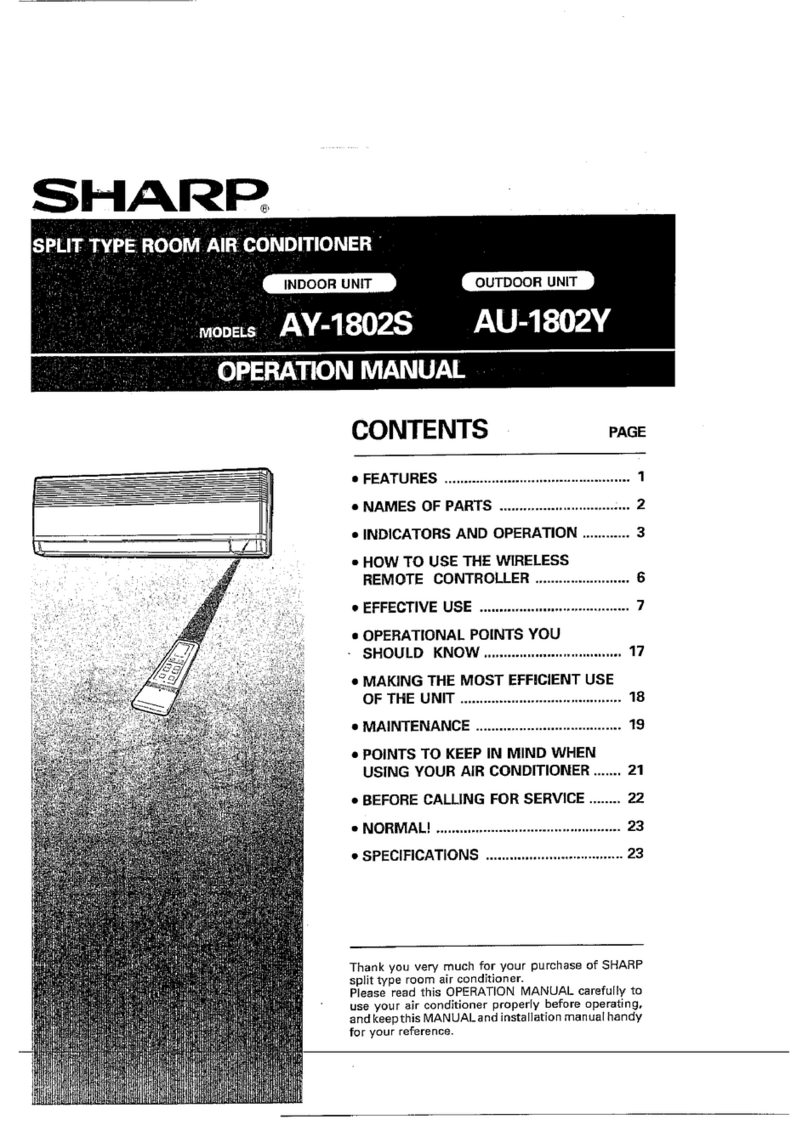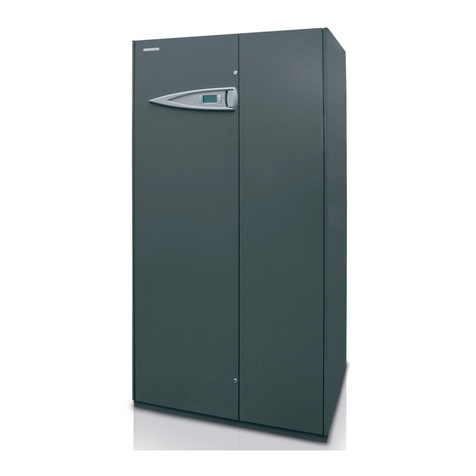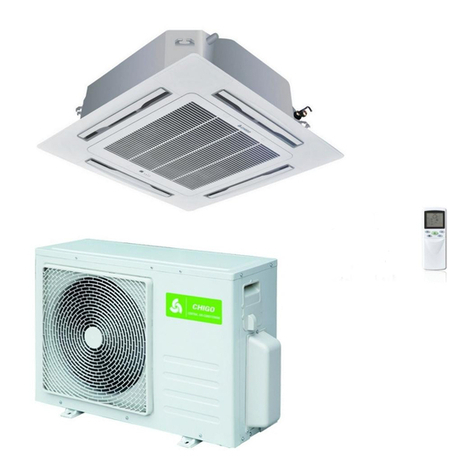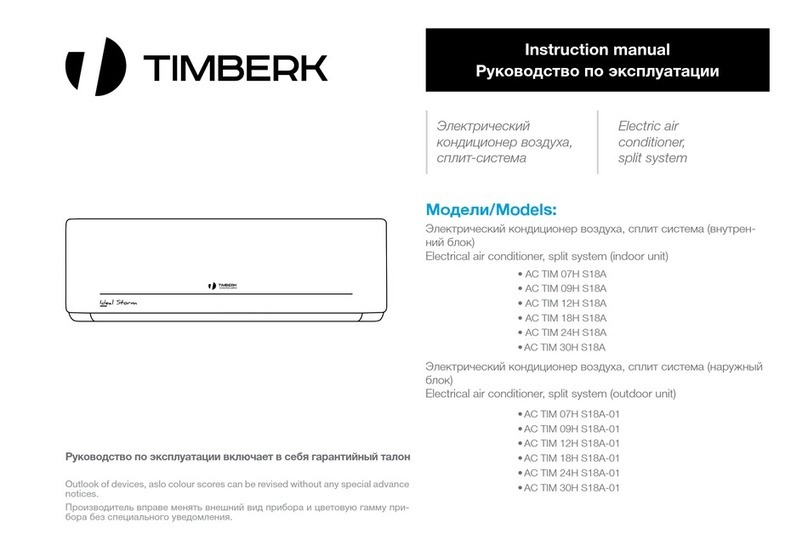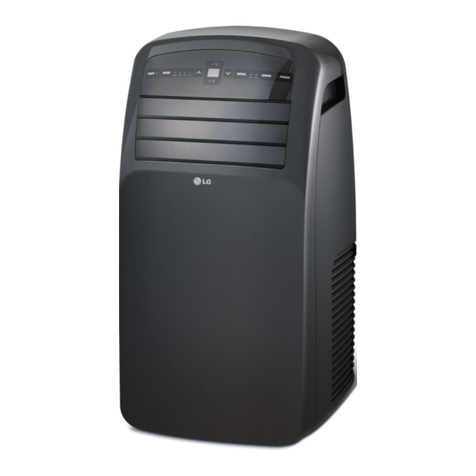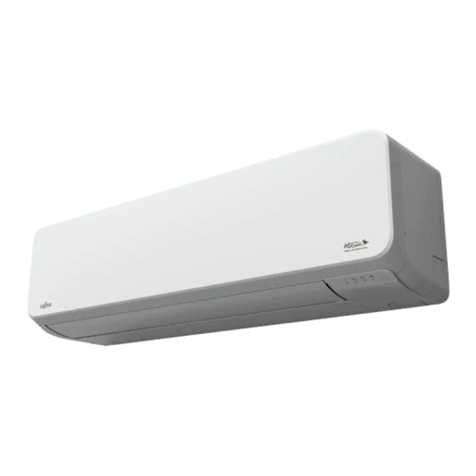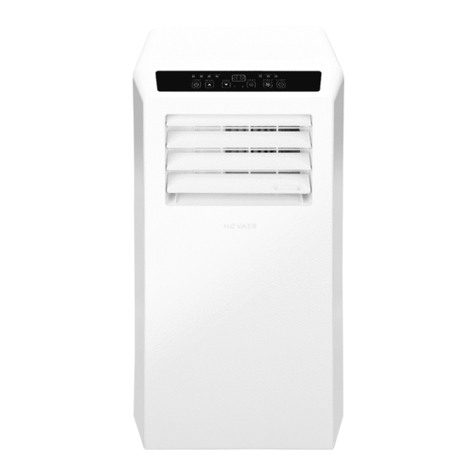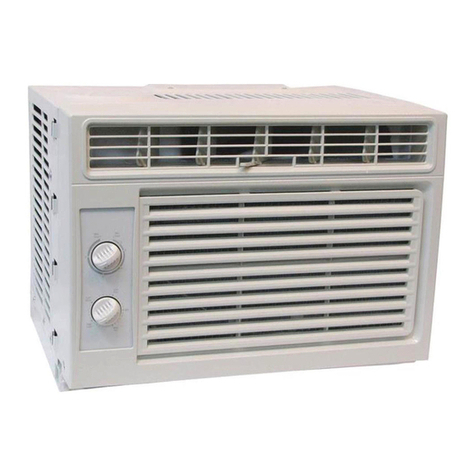
PREPARING EQUIPMENT FOR OPERATION CONTINUED
Check the airflow by checking the external static
pressure. Verify the airflow is within the ratings. Check
blower motor amperage. Make adjustments as needed
to ensure airflow is correct and to specifications. On
units without hot gas reheat, the low ambient head
pressure control should be factory set to cut-in at 450
PSIG and cutout at 400 PSIG. Check calibration of this
control. If trim adjustment is required maintain a wide
differential.
On systems with optional hot gas reheat, check the
reheat control valve. This valve is factory set at a
differential of 8-10 PSIG. This should be adequate for
most applications. However, if additional reheat capacity
is required, increase the differential pressure to a higher
value. To do this, attach discharge pressure gauges to
the Schrader connections upstream and downstream of
the valve. Remove the cap from the top of the valve and
turn the stem clockwise to increase the pressure
differential and counterclockwise to decrease the
differential. Verify the operation of the reheat system by
turning the reheat thermostat to a temperature 5-10
degrees F. above the leaving air temperature. The
reheat solenoid will be energized and will cycle as the
temperature changes. Set the reheat thermostat at the
desired leaving air temperature. Adjustment should also
include a calibration check of the head pressure control
for the other fan motor(s) .The recommended settings
are to cut in at 350 PSIG and cutout at 400 PSIG.
Disregard these steps if the unit is not equipped with hot
gas reheat. These units utilize an electronic (P-66)
variable speed head pressure control for one condenser
fan motor. It is factory set to maintain a minimum head
pressure of 330 PSIG. For more information on the
reheat control valve, See Supplemental Instructions for
Hot Gas Reheat. Readjust the reheat thermostat to 65-
70 degrees F. The hot gas reheat circuit should be
energized. Again clear the sight glass. This would be the
maximum charge required for this system. The final
adjustment of the refrigerant charge should be by
subcooling. The recommended subcooling at the
condensing unit should be around 15 degrees at 75
degrees F. and as low as 5 degrees at 105 degrees F.
Verify proper operation of the thermostatic expansion
valve by checking the superheat. The superheat should
be 18-20 degrees at the suction line in the condensing
section.
SERVICE
MAINTENANCE
Filters must be checked at least once each month on
commercial operations. It is not recommended that filters
be allowed to load entirely with dirt before replacement
since this practice will permit excess dirt to foul the
cooling coil and introduce service problems by reducing
air flow. Provisions have been made for ease in
changing these items.
Belts and Pulleys should be checked whenever filters
are changed. Make sure belts and setscrews are set
tight. Check for wear, cracking, alignment, tension and
motor amperage.
Condensate Drains should always be checked whenever
filters are changed to ensure the condensate is draining
properly.
Condensate Drain Pan should be cleaned and flushed
every six months.
Bearings require no maintenance since sealed ball
bearings are used in the blower motor and condenser
fan motors. Lubrication is thus provided for the life of the
bearing.
Finishing of the sheet metal parts are done by painting in
an Electrodeposition paint system for a dipped and
baked enamel finish. Appearance can be restored with
automotive wax.
Seacoast Construction. Units furnished with the
Seacoast Construction protection option or other
corrosion protection coating (Heresite®or
ADDIGUARD™ 3600); it is imperative to clean and
inspect the cabinet, coils and components on a
semiannual basis. Use a chemical cleaning agent to
neutralize the contaminant. Then rinse thoroughly. Fresh
water rinsing alone does not constitute cleaning.
Controls require no routine maintenance. The points on
the compressor contactors will become discolored
through usage, but it will not effect system operation, Do
not dress or file contact points. Should a surge of power
or unusual condition damage points, replace them with
identical items from the manufacturer.
PARTS SECURITY CHECK
Before leaving an installation or operating the unit,
determine whether any loose parts should be tightened.
Failure to do this may lead to noisy operation.
Check all setscrews on blowers and fan blades.
Adjust and tighten all thrust collars.
Adjust all belts and check drives.
Retighten all electric connections.
The Standard base pan of all Addison Products roof
mounted packaged heating and cooling products is
equipped with a series of “weep” holes on the bottom
edges.
These ¾” threaded fittings are provided to allow natural
drainage of any rain water that has entered the unit in
the event service panels are incorrectly or incompletely
installed or damaged has occurred to the unit’s roof.
These “weep” holes are also a convenient means of
evacuating water used to wash the interior of the unit or
evaporator and reheat coils.
The threaded fittings accommodate drain piping or
maintenance hoses used to conduct water from the
inside of the unit to a safe disposal.


























